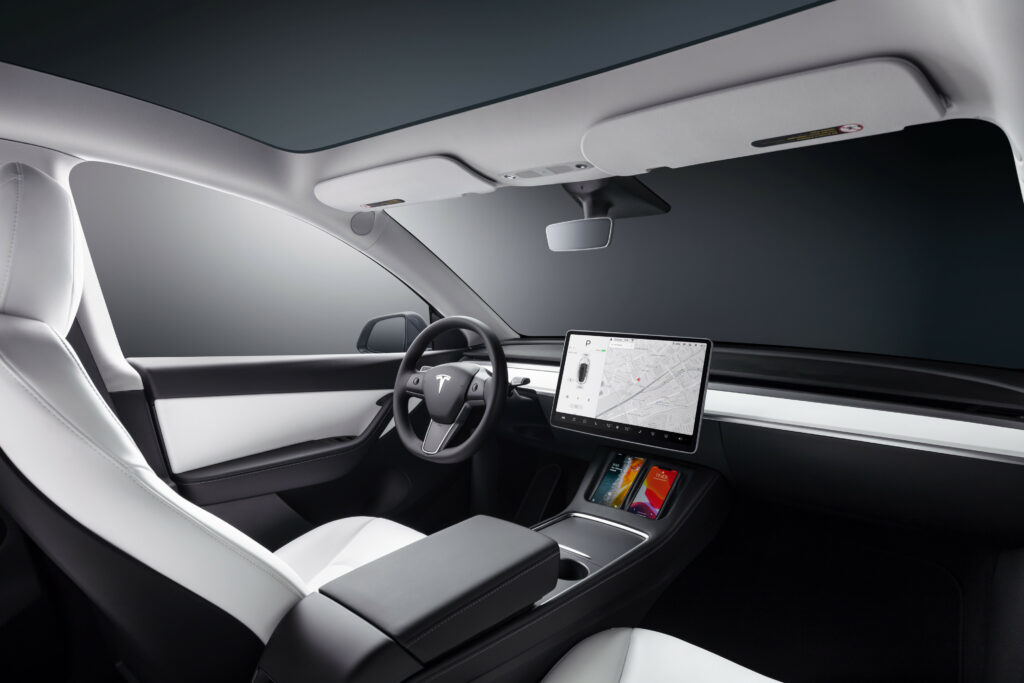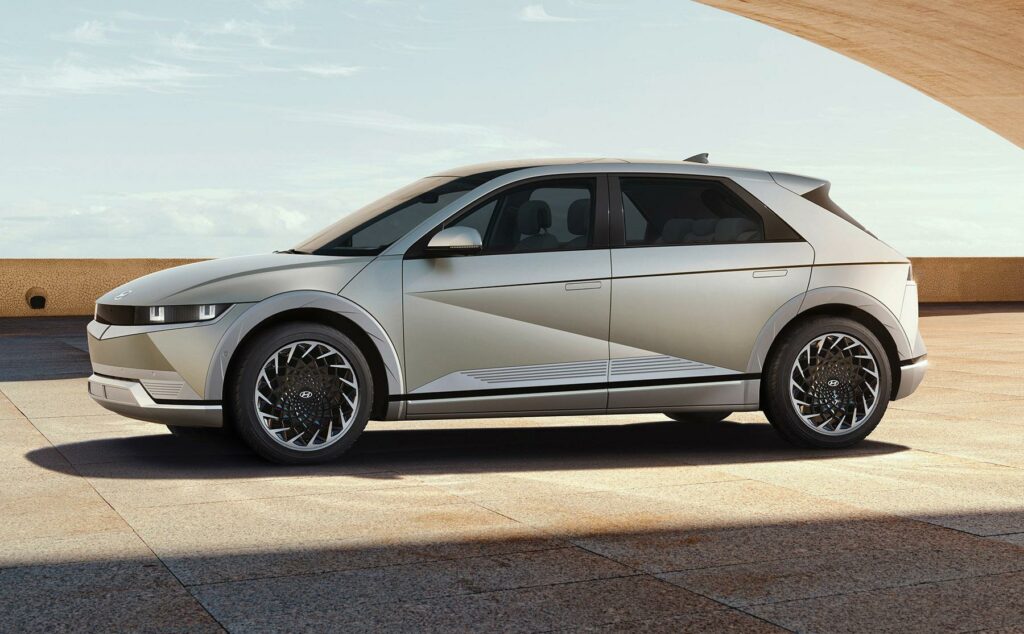The Inflation Reduction Act of 2022 has thrown a wrench in the EV buying plans of many. Just three weeks after we first heard word of this deal between two Senators, it has been signed into law. Time is of the essence if you’re on the fence about an EV purchase! But don’t run out to buy that shiny new Tesla Model Y just yet. The language of the Inflation Reduction Act’s ‘Clean Vehicle Credit’ details requirements and important dates that you need to know about before signing a contract to purchase.
If buying an EV in America is in your future, here’s what you need to know today.
What’s In the New EV Tax Credit? Income Limits and Several New Eligibility Requirements
These are the big changes to the EV tax credit:
- For new vehicles, income is capped at $150,000 for individuals, $225,000 for head-of-household, and $300,000 for families (effective January 1, 2023).
- The original 200,000 sale cap is removed on January 1, 2023. Tesla and GM will again be eligible.
- To qualify, vehicles must have ‘final assembly’ in the U.S., Canada or Mexico.
- The new credit is worth up to $7,500, with $3,750 from at least 50% of battery components being produced in the U.S. or Free Trade Agreement countries, and an additional $3,750 if at least 40% of battery minerals originate in the U.S. or FTA countries. These battery sourcing requirements begin when the rules are finalized by the IRS, which must be before December 31.
- Beginning January 1, 2024, this incentive becomes available as a point-of-sale rebate.
- A used EV tax credit begins January 1, with the lesser of 30% of the selling price or $4,000 available for used EVs purchased from a dealer and costing less than $25,000. Income is capped at $75,000 for individuals, $112,000 for head of household, and $150,000 for joint filers.
These new EV tax credit eligibility requirements eliminate several of the most popular electric vehicles on sale today. Here’s our list of the winners and losers, including those that will qualify for at least half of the new credit.
Tesla and GM: Wait Until January 2023 to Take Delivery

If you’re considering buying a Tesla Model Y, Cadillac Lyriq or Chevrolet Bolt, wait until January 1, 2023 to make the purchase. The revised EV tax credit removes the 200,000 sale cap for automakers on January 1, 2023. The 200,000 sale cap had previously disqualified Tesla and GM EV models from the original $7,500 EV tax credit.
Why only the Model Y? The Model Y is the only Tesla that will qualify for the new tax credit because of the price caps. The revised EV tax credit caps SUV and truck prices at $80,000, and sedans at $55,000. The only Model 3 under the price cap is the rear-wheel drive Model 3, but it sources batteries from CATL in China, so it is disqualified. The Model S and Model X are far too expensive. The Model Y is the most popular EV in America, so this is still good news for Tesla.
Ford EVs: It’s Complicated

Ford makes the Mustang Mach-E in Mexico, and that’s not an issue as the new bill requires final assembly to be in the U.S., Canada or Mexico. However, Ford has battery sourcing agreements with numerous battery suppliers, and that’s where it gets complicated.
Ford currently makes the Mustang Mach-E in Mexico with batteries from LG Chem (now LG Energy Solutions). LG manufactures these battery cells in Poland, but the battery pack assembly is in North America. It’s unclear if Ford’s battery assembly meets the 40% battery component requirement. Unfortunately, Ford just signed an agreement with Chinese battery manufacturers CATL to supply batteries for upcoming Ford Mustang Mach-E’s. This may disqualify the automaker briefly, but not for the time being. Ford has already announced plans for two battery plants in Kentucky and Tennessee.
Does the F-150 Lightning qualify for the new EV tax credit? Yes, but it depends on where exactly the batteries are sourced from. Ford has said that is sources many F-150 Lightning battery packs from SK Innovation’s factory in Georgia, USA. That’s great for eligibility. However, Ford recently shared that they are sourcing more batteries for the Lightning from Chinese automaker CATL. That could complicate eligibility.
Most F-150 Lightning trim options that include the Extended Range battery (for 320 miles of EPA-rated range) are near or over the $80,000 price cap for trucks. Check your vehicle build specs and pricing to see if your total MSRP is under the $80,000 limit.
If you secured a written binding contract to purchase before the bill was signed, you could claim the original $7,500 tax credit when you file 2022 taxes.
In summary, most Ford electric vehicles will likely qualify for at least half of the new EV tax credit, which would be $3,750. Of course, this depends on battery sourcing. It’s possible that Ford EVs could eventually qualify for the full $7,500 once we know more about where Ford’s battery suppliers source their minerals.
EV Models Manufactured Outside of North America Have Lost Eligibility

Many of today’s best electric vehicles are made overseas for now. The Kia EV6, Audi etron, Polestar 2, and my own Hyundai IONIQ 5 are all disqualified due to the Made-in-America requirement.
The language of the bill states that as soon as it is signed into law, EVs that do not have final assembly in the United States, Canada or Mexico will lose eligibility. The bill was signed on August 16, 2022.
See our full list of EVs that will lose eligibility, and those that will qualify.
The ‘Transition Rule’ in the new EV tax credit allows buyers to claim the original $7,500 EV tax credit if the buyer has signed a “written binding contract” BEFORE the Inflation Reduction Act of 2022 was signed into law.
Love legalese? Read the Senate’s Inflation Reduction Act’s text here.
Shopping Used EVs? Wait Until January
The new bill states that the new used EV tax credit will take effect January 1, 2023 as a tax credit, and it will become refundable at the point of sale starting on January 1, 2024. There are STRICT limitations, however.
To qualify for the used EV tax credit, the vehicle must meet the following qualifications: cost less than $25,000; be at least 2 years old; and sold by a qualified dealer. Buyer income limits are an adjusted gross income of $75,000 for individual tax filers, $112,000 for head of household, and $150,000 for joint filers. Taxpayers are allowed one used EV credit every 3 years.
This Is A LOT to Take In
It’s a wild time to be in the market for an EV. Did we miss something? Let us know in the comments, or better yet chat with our EV and general car buying experts at the CarEdge Community Forum. You can also email me at [email protected]. This is an evolving situation!













0 Comments